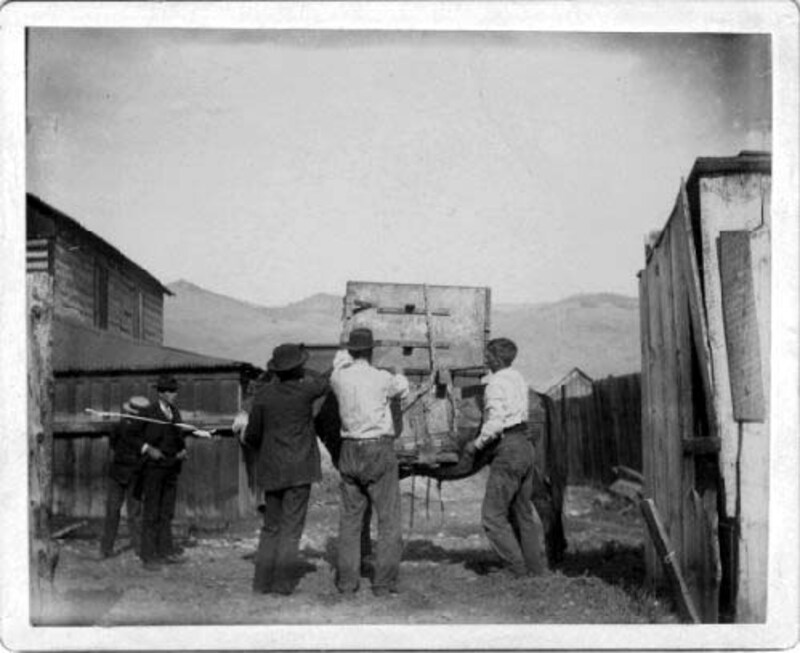Before there were roads or rails, goods were shipped by boat or barge and then on by horse or mule. As the nation’s transportation network developed, only the most inaccessible places continued their dependence on pack trains for supplies. In many of Idaho’s remote places, the pack train era lasted nearly a hundred years. Today’s pack trains are more likely to be providing support services for tourists and hunters than maintaining mountain communities.
Idaho pioneer, and early-day packer, John Hailey gives a flavor of the time: “The population of the mining camps in Boise Basin in the summer of 1863 was variously estimated from fifteen to twenty thousand, mostly men. It took great quantity of provisions, tools, etc., to supply the demand. Everything had to be packed on animals from Umatilla or Walla Walla, except a small amount, principally flour, which came from Salt Lake City, Utah. A great many pack mules and horses were necessary to transport these supplies as it was necessary to get in enough to last through the Winter and until the [pack] trains could come in again in the Spring.”
Pack mules were the animals of choice, although horses were also used. The packers, men who knew both animals and materials, were often from Mexico; much of the language of tack and technique is from the Spanish. A Chinese packer in Lewiston, Ah Choy, always drew a crowd when he first saddled up his team – the “cayuses were frisky and bucked” – after a winter of inactivity. In addition to the standard items of the mercantile trade – flour, bacon, beans, whiskey – packers also supplied the mining regions with the machinery needed to mine and mill the ore. Large objects were broken down to their component parts and strapped to the back of the proverbial beast of burden. A crescent-shaped cast-steel stamp mill base weighing 667 pounds was carried by one of Bob Grostein’s mules from Lewiston over 100 miles into the mining camp at Warren in the 1860s.
When the mines declined and closed, it was seldom important or necessary to haul out all that had been hauled in. Many an outdoor adventurer today will find, as they hack through the brush in the middle of the forest, a huge metal object, a giant machine, now rusted and overgrown. In all likelihood, it was hauled in, piece by piece, on a pack mule.
Sources
Written January 2005 for the UI Library’s Digital Memories website.


